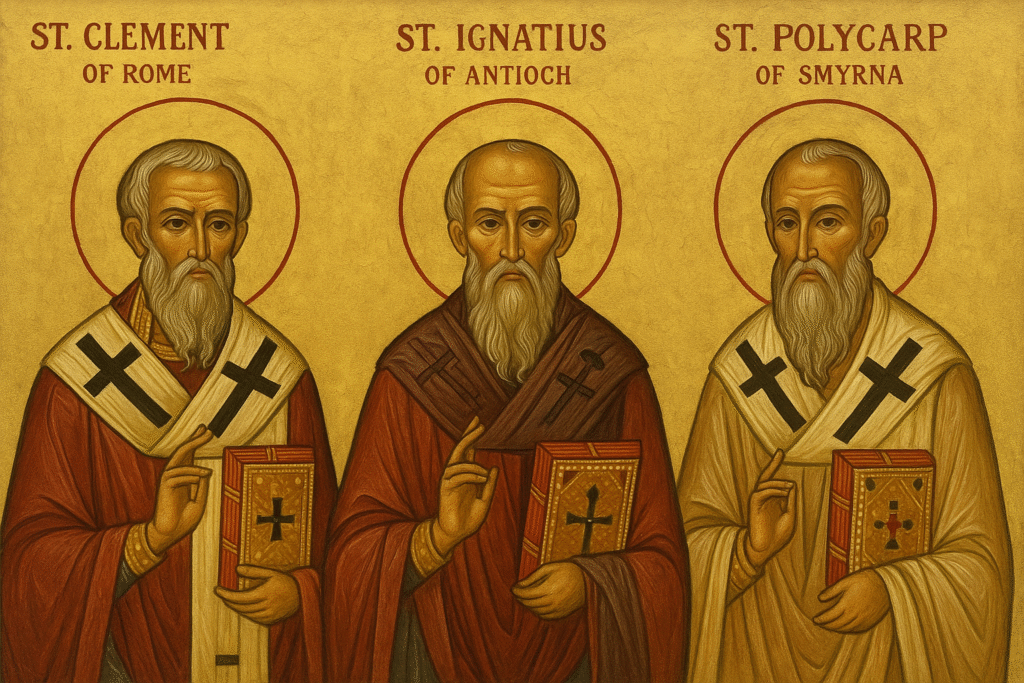The Church Before the Divisions
When we open the writings of the early Church Fathers—especially those who lived before the Council of Nicaea—we are peering into a time when Christianity was still visibly one. The faith was young, often persecuted, and still close enough to the Apostles that their voices echoed through the writings of their disciples. In those centuries, the Church had not yet fractured into East and West, Catholic and Protestant, Orthodox and countless denominations. The Fathers reveal what the Christian faith looked like when it was still one family gathered around one table.
A United Faith Before the Schisms
The pre-Nicene Church was spread across the known world, from Rome to Antioch to Alexandria. Yet despite differences in language and culture, the letters and writings of the Fathers speak with remarkable unity. They all describe the same pattern of faith: baptism into Christ, gathering on the Lord’s Day, reading the Scriptures, offering prayers, and receiving the Eucharist. This was not a theoretical unity—it was a lived one. Christians everywhere shared a common worship, a common hope, and a common way of life.
If You Want to Know What the Early Church Believed
If you want to know what the early Church actually believed—what the Apostles taught, how they understood the Scriptures, and how they lived out their faith—you have to read the accounts of the early Fathers. These men were not far removed from the Apostles; some were their direct disciples or disciples of those who knew them. Their writings are the bridge between the New Testament and the later centuries of Christian history. They show us how the first generations interpreted Christ’s words, celebrated His mysteries, and organized the Church’s life. Without their testimony, we would be left guessing what “the faith once delivered to the saints” looked like in practice.
Worship Centered on the Eucharist
Worship in the early Church was not improvised or centered on individual expression. It was ordered, reverent, and Eucharistic. St. Justin Martyr, writing around the year 150, describes the Sunday liturgy in detail: the readings from the Apostles’ writings, the prayers, the kiss of peace, the offering of bread and wine, and communion in the Body and Blood of Christ. This was not a symbolic meal but a sacred participation in Christ Himself. When we read the Fathers, we see that the pattern of Christian worship we know in the liturgy today is not a later invention—it is ancient, inherited, and apostolic.
Faith Expressed Through Living
For the early Christians, faith was not separate from life. Their writings are filled with calls to charity, fasting, forgiveness, and courage in the face of persecution. They wrote about feeding widows, rescuing abandoned children, and showing mercy even to those who killed them. The Fathers didn’t just write theology—they lived it. Their words were often written in prisons or just before martyrdom. They show us a faith that was costly, embodied, and full of love.
The Fathers Are Not Scripture—But They Are History
It’s important to say this clearly: the writings of the Fathers are not Scripture. They are not divinely inspired in the same way the Bible is. But they are history—real records of what Christians believed, how they worshipped, and how they understood the Gospel in the generations immediately after the Apostles. Because of that, they offer us something Scripture alone cannot: context. When we read them, we see how the earliest believers interpreted the Bible, structured their churches, and lived out their faith in the real world. These writings help us understand not just the message of the Gospel, but the kind of lives it produced.
A Living Example for the Modern Church
In an age when Christianity is divided into countless branches, the early Fathers remind us that unity once existed—not through compromise, but through shared worship and fidelity to the faith handed down from the Apostles. Their example calls us back to the simplicity and depth of that united Church. They invite us to remember that the Church is not a modern invention or a personal interpretation, but a living tradition with roots deep in history.
To read the early Fathers is to sit at the feet of the first Christians and hear their voices speaking across the centuries. They show us what the Church looked like when it was whole—when belief, worship, and life were one seamless expression of love for Christ.
And in rediscovering their world, we just might begin to heal our own.
Apostolic Fathers — Those Who Learned Directly from the Apostles
1. St. Clement of Rome (c. 30–100 AD)
- Connection to the Apostles: Believed to have known the Apostle Peter and possibly Paul.
- Role: Third or fourth bishop of Rome.
- Major Work: First Epistle to the Corinthians.
- Death: Martyred under Emperor Trajan, reportedly drowned with an anchor tied around his neck.
- Who Is Saint Clement
- First Clement Audio Book
2. St. Ignatius of Antioch (c. 35–108 AD)
- Connection to the Apostles: Disciple of St. John the Apostle.
- Role: Bishop of Antioch in Syria.
- Major Works: Seven Letters written on his way to martyrdom.
- Death: Martyred in Rome, thrown to wild beasts.
- Who Is Ignatius of Antioch
3. St. Polycarp of Smyrna (c. 69–155 AD)
- Connection to the Apostles: Disciple of St. John the Apostle.
- Role: Bishop of Smyrna (modern-day Izmir, Turkey).
- Major Work: Letter to the Philippians.
- Death: Burned at the stake and then stabbed when the fire would not consume him.
- Who Is Poloycarp
- Polycarp letter to Philippians Audiobook

